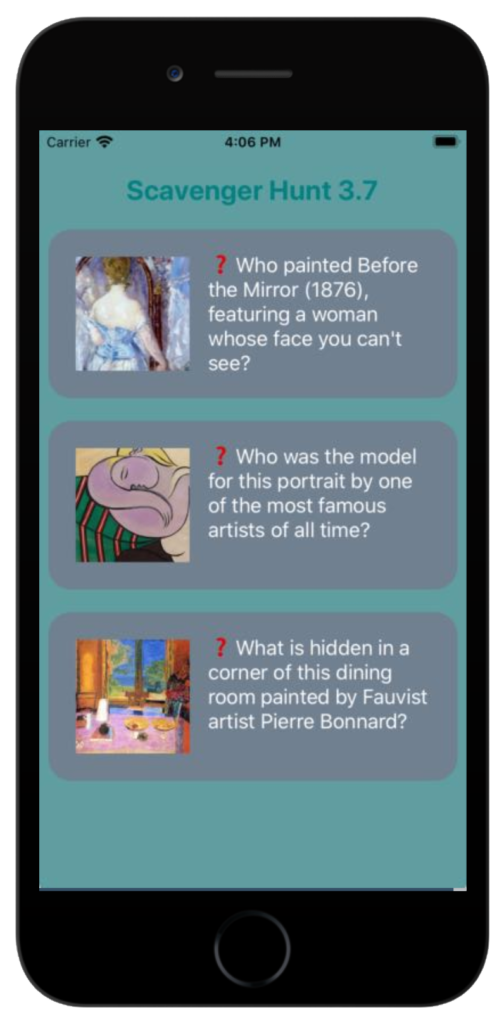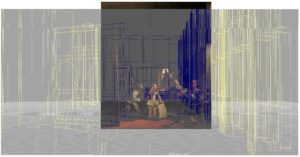 Curators hoping to augment their collections with interactive exhibits often forget that today’s visitors walk in the door with powerful digital interfaces already sitting in their pockets. For the 2020 Maine Archives and Museums conference on October 8th, Still Water Co-director Jon Ippolito offers a workshop that walks participants through the creation of a cross-platform smartphone app to connect visitors in person or over the Internet.
Curators hoping to augment their collections with interactive exhibits often forget that today’s visitors walk in the door with powerful digital interfaces already sitting in their pockets. For the 2020 Maine Archives and Museums conference on October 8th, Still Water Co-director Jon Ippolito offers a workshop that walks participants through the creation of a cross-platform smartphone app to connect visitors in person or over the Internet.
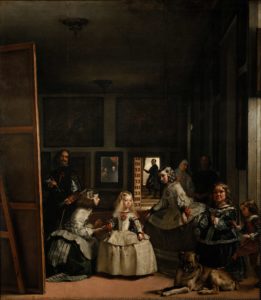 Workshop participants will create a scavenger hunt app that prompts visitors to find and check off artifacts on display. The app will be based on the free, versatile React Native framework used by Facebook, Instagram, and other prominent companies. Participants will learn the basics of React Native’s HTML-like tags, customize them to fit their collection, and test-drive this new app on their own Android or iOS device.
Workshop participants will create a scavenger hunt app that prompts visitors to find and check off artifacts on display. The app will be based on the free, versatile React Native framework used by Facebook, Instagram, and other prominent companies. Participants will learn the basics of React Native’s HTML-like tags, customize them to fit their collection, and test-drive this new app on their own Android or iOS device.
Attenders will walk away with a simple demo app customized for their collection. A laptop and recent smartphone are all that is required. Interested participants may learn more after the session by taking advantage of 14 interactive React Native tutorials from the University of Maine’s Just-in-Time Learning platform.
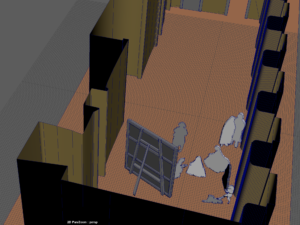 Ippolito also authored “Shuttered Gallery to Virtual Museum,” the cover story of the August 2020 Maine Archives and Museums Quarterly. The article surveys digital strategies for engaging visitors when your institution is closed, from simple Web pages to augmented reality apps.
Ippolito also authored “Shuttered Gallery to Virtual Museum,” the cover story of the August 2020 Maine Archives and Museums Quarterly. The article surveys digital strategies for engaging visitors when your institution is closed, from simple Web pages to augmented reality apps.
The article describes an innovative project by Still Water Senior Researcher John Bell to create a three-dimensional version of a painting that has confounded art historians for decades.
One of the more inventive uses of digital surrogates for real culture comes from my fellow Digital Curation professor John Bell, who is working with Dartmouth’s Karolina Kawiaka on a project that could let viewers step inside one of the world’s most famous paintings. A pinnacle of Baroque painting, Diego Velazquez’ 1656 Las Meninas has stumped generations of art historians who’ve tried to interpret its deceptively straightforward-looking perspective. Depending on your interpretation of who is standing where, the subject of the painting may be the Spanish king and queen seen in a distant mirror, or the court maids for which the painting is named, or the artist himself. Now Bell and Kawiaka are re-creating the room depicted in Las Meninas in virtual reality, populating this digital architecture with each of the figures to match the positions and angles implied by the canvas.
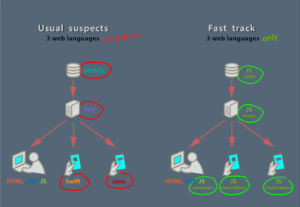
The article concludes with instructions on creating 3d models of objects in your collection with nothing more than your smartphone, drawn from an assignment for the introductory course in the University of Maine’s all-online Digital Curation graduate program.

